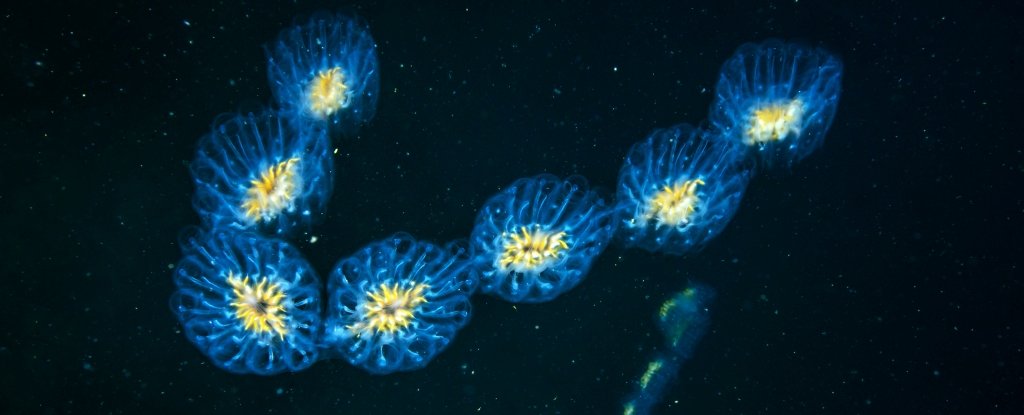Products You May Like
If Earth’s temperature rises by a significant enough margin, we could see a major restructuring of the plankton species living in our oceans.
Not only would the diversity of species radically change, but warming oceans could see plankton migrating from the tropics towards the poles, away from waters growing too warm for habitability.
In fact, we may already be observing this shift in the last few decades, with some species documented farther north than we’ve ever seen them.
This restructuring would have a major impact on oceanic ecosystems, as planktons form a vital component of both the oceanic carbon cycle and the food web.
Plankton are mostly microscopic organisms that drift wheresoe’er the ocean currents take them, with insufficient propulsion abilities to control their journeys. They are the second-most abundant life form on Earth, beaten out only by bacteria; without plankton, life as we know it would not exist in our oceans.
Two types that are of particular interest are phytoplankton (plants) and zooplankton (animals). Phytoplankton’s photosynthesis plays a major role in the carbon cycle, and the production of Earth’s oxygen, and the organisms constitute a vital part of the food web on which other, larger organisms rely. Zooplankton, too, is a vital part of the food web and carbon cycle.
Changes in the distribution of plankton are expected as global temperatures continue to trend upwards. What those changes might be and where plankton might end up is the subject of a new study led by environmental physicist Fabio Benedetti of ETH Zurich in Switzerland.
He and colleagues developed global distribution maps for more than 860 species of phytoplankton and zooplankton, and then used statistical algorithms and climate models to predict the changes these communities would undergo under future climate change.
Initially, they found an increase in both kinds of plankton; but if mean sea surface temperatures were to reach greater than 25 degrees Celsius (the long-term average is currently 16.1 degrees Celsius), zooplankton would decline in the tropics, and all species would shift towards cooler waters at higher latitudes.
In these polar communities, up to 40 percent of phytoplankton species would be replaced by subtropical interlopers, which means it’s not only the equatorial oceans that would be affected.
“In some areas of the ocean, we will see a rise in species numbers that may, on the face of it, seem positive,” Benedetti explains. “But this boost in diversity could actually pose a serious threat to the existence and functioning of well-established marine ecosystems at higher latitudes.”
Although many plankton species are tiny, they are not all the same size, and this size variation matters. In the mid- and high latitudes, the ecosystems contain relatively few species, and these plankton communities consist of larger species that are efficient at exporting organic carbon, and are an important food source for fish.
The team’s simulations showed that rising temperatures make the habitats less hospitable for larger plankton, but better for smaller ones. This would result in a boom of small plankton diversity, and a decline in the larger species at these latitudes. In turn, this would impact fish populations.
It would affect the carbon cycle, too. Larger plankton species often have shells that smaller species do not, and heavier excretions. For these species, dead plankton and their waste sink faster, which means that the decomposition process that transforms the carbon in their bodies and poop to carbon dioxide happens at greater depths.
This means the carbon dioxide gets trapped for long periods, prevented from reaching the atmosphere.
Replacing these species with smaller species would result in decreasing efficiency of the ocean carbon sink, although it’s a little harder to quantify the effect, the researchers said.
“The only thing we can determine right now is how important certain areas of the ocean are today in terms of different ecosystem services and whether this provision of services will change in the future,” Benedetti says.
And it really does seem to be a matter of when, not if. We’ve already seen marine life leaving equatorial regions as the waters become too hot for survival, and we’ve already seen large copepods start to be displaced by smaller species. Jellyfish have also been observed moving north and south away from the equator.
These results and observations imply “that future climate change threatens the plankton-mediated ecosystem services provided by the ocean in these regions,” the researchers write in their paper.
The research has been published in Nature Communications.
